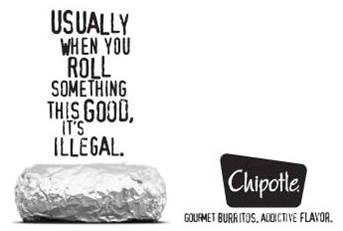I work in a chain restaurant. That being said, you may think it's the idiot that asks for a refill every two seconds or the tables that can't comprehend the concept of tipping that has scarred me for life...but in all actuality, it's in the way I've seen the food being prepared that I've become extraordinarily skeptical of the idea of chain restaurants being "healthy."
So often, we opt for a sit-down restaurant like Chili's or Outback in an attempt to avoid the fattening images we've built around McDonald's and Burger King. We're constantly reassured that we're receiving higher quality food because of the friendly server who brings it to our table and the twenty minutes we wait for our meal. It's like waiting for food fools us into believing it's being made fresh or from scratch. Check out the reasons why some restaurants may be just as unhealthy as their fast-food counterparts:
1. Portion distortionTGI Friday's recently

debuted a new "3 Course" menu, where guests choose an appetizer, entree, and dessert for an alluring low price. The funny part about this meal deal, however, is how these full-size courses are meant to be shared! The Fried Mozzarella normally divided between two or three people becomes a 660 calorie starter - and you still have an entree and dessert on the way! Humongous salads pack over 1,300 calories and 50 grams of fat (almost the entire daily recommendation for a 2,000 calorie diet) and steaks come prepared at two to three times the standard serving size.
2. Hidden food additives
"What do a hot dog from Yankee Stadium, potato latkes from the Four Seasons in Manhattan, and a sirloin steak from Applebee's have in common? They all come from Sysco...a food wholesaler." Working at a restaurant opened my eyes to just how many items come frozen or from a box. Hooters's wing sauce nutritional facts have yet to be disclosed, but it's rumored that the famous marinade hosts a whole party of unhealthy friends, like partially hydrogenated margarine and xanthan gum. It's no wonder your brain screams for naptime after eating out!
3. "Would you like fries with that?"
Whether in a paper cup or on a china plate, a fry is a fry is a fry. Don't forget, however, what else is shared in the same fry grease as our favorite side; Burger King French Toast Sticks are thrown in the same oil as Chicken Fries, BK Fish patties, pork sausage, and onion rings. Mmm, good morning, Fish Toast Sticks, you taste good in my maple syrup.
4. Refills, bar drinks, and extrasSince liquid calories don't register with our digestive system like solid foods do, it's easy to get carried away with the soda. Every free refill your server is trained to bring y

ou adds another 200-450 calories to your meal, not including the sugary syrup added to the popular strawberry lemonade or cherry Coke. Mixed drinks from the bar, especially ice-cream based drinks like mudslides, offer no nutritional value but contain heavy amounts of carbs, sugar, and/or fat. We tend to forget about the impact the request for extra sauce carries, but a seemingly tiny side of ranch dressing boasts 200 calories, and almost all of them from fat.
Not to ban all dinners out, though! There is a sensible way to consume restaurant food. For one,
take half of your meal home with you. Not only will you have lunch ready to go for the next day, you'll skip that yucky bloated feeling that usually comes home with you.
If you want an appetizer, save dessert for next time or vice versa. Don't be afraid to share a normal-sized portion with someone else at the table! This keeps both your tummy and your wallet full, double whammy!
Read the fine print in the menu; "creamy," "loaded," "crispy," "fried," and "sauteed" are keywords for added fat, so ask for your menu item grilled or with the sauce on the side. Most nutritional facts are available on the restaurant's website to check out, too!
Eating out can be the pitfall of any healthy diet, but realize what you're eating and bring a friend or two and you can still enjoy a night out. Oh, and don't forget...tip your waitress/waiter 20%. If you're not sure how to figure that out, we'll be more than happy to help you. :)




















